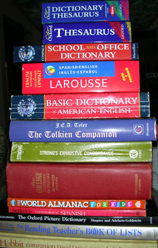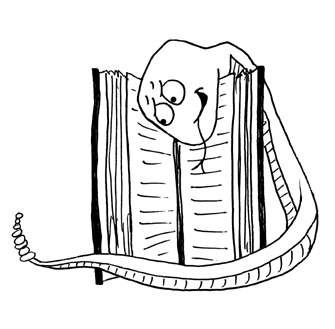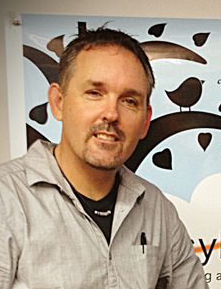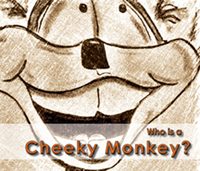

Month: July 2013
Welcome to the Busybird blog, where you can find helpful articles, updates, industry news and more. Make sure you stay up to date by signing up to our newsletter below.
Phonetic Spelling and the English Language
July 26, 2013 It is undeniable that the English language is often illogical and difficult to learn. It is a messy jumble of words borrowed and evolved from a huge assortment of other languages, both living and dead, and yet I love it. The confusing nature of our language, however, has sparked an increasingly relevant debate about whether we should preserve the English language (and its many eccentricities) or follow a more logical approach and move to phonetic spelling.
It is undeniable that the English language is often illogical and difficult to learn. It is a messy jumble of words borrowed and evolved from a huge assortment of other languages, both living and dead, and yet I love it. The confusing nature of our language, however, has sparked an increasingly relevant debate about whether we should preserve the English language (and its many eccentricities) or follow a more logical approach and move to phonetic spelling.
The people in favour of phonetics (such as Peter Whitmore) argue that introducing phonetic spelling would improve literacy rates since it follows more logical rules, linking spelling and pronunciation and making it easier to learn. Nonetheless, I see this as a lazy approach; rather than devoting more time and effort into ensuring our students know how to properly read and write, they want to instead lower the standard of what it means to be literate. Should we give up and allow ‘definitely’ to be spelled ‘definately’ purely because it is commonly misspelled that way?
Furthermore, allowing our language to be dumbed down in this fashion means that we will lose a huge portion of our published history and linguistic heritage. Children taught to solely use phonetic spelling would be unable to simply pick up older literature such as Shakespeare and read it. Students already encounter difficulties when reading Shakespearean language – do we really want to widen that existing gap? Even if works were to be translated or ‘updated’ into phonetic English, they would almost certainly lose some of its subtleties. In addition, it would be logistically impossible to translate all published works, meaning we would be limiting our history and banishing those works into obscurity.
Moreover, choosing to use phonetic spelling does not eliminate communication difficulties and inconsistencies. Pronunciations vary according to a person’s geographical location and upbringing. Some people pronounce ‘Saturday’ as it’s written, others omit the ‘ur’ and say ‘Sat-day’ – how would this be spelt phonetically then? The same goes for other commonly mispronounced words like ‘library’ and ‘wheelbarrow.’ English would lose a lot of its precision and depth, too. Homophones (e.g. quay/key, sore/saw) would cease to exist, and when so many words share spellings and pronunciations, it seems inevitable that some would eventually fade into disuse.
The written language unifies the spoken language, which is no more apparent than in China; there are fifty-two officially recognised dialects, but only one official written language. I think it’s beautiful (not to mention really cool) that the written language can bring together people who would otherwise not be able to communicate.
I understand that languages evolve and change. We don’t want to end up clinging to a dead, static language that exists only because we won’t let it die. However, it is equally undesirable to devolve into an easy, ugly language simply because people do not know how to correctly spell ‘minuscule’ or ‘environment.’ I love my language the way it is, and it deserves better than that.
– Ariel Skippen
Work Experience Diary: More of My First Day
July 18, 2013 On my first morning, I set down my mug of tea and slid onto a wooden seat at a long editorial table for my first meeting with Les. Even though we had never met I felt I knew him – in a way. After reading blog posts, short stories and his editorials in [untitled], it seemed as though Les and I had been having a meandering conversation for almost a year.
On my first morning, I set down my mug of tea and slid onto a wooden seat at a long editorial table for my first meeting with Les. Even though we had never met I felt I knew him – in a way. After reading blog posts, short stories and his editorials in [untitled], it seemed as though Les and I had been having a meandering conversation for almost a year.
It took a few seconds for reality to reorient while I was sitting there, for the solid facts of perception to overlay my mental conjurations, before the man in the brown hoodie seated casually across from me replaced the phantasm I had known for so long. Even so, the real conversation we were having about editorial issues took on a slightly unreal aspect.
‘We spend a lot of time working with authors and editing the manuscripts before they reach a publishable standard,’ Les was saying. ‘Even very established authors have to be edited.’ He caught my eye as he said, ‘But it’s essential, when you are editing, to respect the author’s voice.’
***
Later that night when I was tucked up at home, I thought I might take another look at the blog on ‘voice’ Les posted earlier this year: ‘When I’m reading a story, I hear the narration in my head. It’s not my actual voice I hear … It’s something distinctive to that author.’
In accord with Les, The Elements of Style by Strunk and White refers to voice as, ‘The sound the writer’s words make on paper.’1 In some ways though, voice is a slippery beastie. It is, at once, the trace of the author whispering to the reader; while, at the same time, it coils and twines and weaves itself through the imagination, forming images that subtly reflect the interior world of the reader. Even the disposition of the commas and full stops contribute to the pulse and rhythm and subtly influence the way the author’s words appeal to the reader’s emotions.
While it might not be possible to separate the author’s voice from our own imaginings, I wonder whether the disembodied voice that weaves itself through the writing is not in some way closer to the real essence of the writer; that rigours of thought might reveal deeper layers of self. Historical novelist Leon Uris said of voice, ‘… you cannot lie to your typewriter. Sooner or later you must reveal your true self in your pages.’2
From an editing perspective, preserving voice is a daunting task. Our language has certain mechanical constraints, and beyond that it is all the fragile music of the author. Alternately, when author and reader meet in the crucible of their imaginings, two minds link in a communion that elides the immensity of time and space. As a reader I can curl up in a comfy nook with the intimate thoughts of writers from Aristotle to Blaise, Les, the gifted and inventive contributors to [untitled] and all the writers betwixt and between.
– Lisa Roberts.
1. Jacob, D. quoting Leon Uris 2005 Will Write for Food Da Capo Press Philadelphia p.15
2. Marsden, J. quoting Strunk and White 1993 Everything I Know about Writing Pan Macmillan Australia Pty Ltd p.29
A profile on Kev Howlett.
July 12, 2013 Kev Howlett is the creative artist behind all of Busybird Publishing’s projects. The covers of every issue of [untitled], Journey: Experiences with Breast Cancer, and the illustrator behind Who is a Cheeky Monkey? are all examples of his work. He also photographs and illustrates for Busybird clients, and his artwork will be seen in two children’s book (The Magnificent Climbing Tree by Trish Jowett and also a children’s travel series), which will be published later in the year.
Kev Howlett is the creative artist behind all of Busybird Publishing’s projects. The covers of every issue of [untitled], Journey: Experiences with Breast Cancer, and the illustrator behind Who is a Cheeky Monkey? are all examples of his work. He also photographs and illustrates for Busybird clients, and his artwork will be seen in two children’s book (The Magnificent Climbing Tree by Trish Jowett and also a children’s travel series), which will be published later in the year.
Art’s something that has grown within Kev since he was a teenager. His work so impressed the art teacher at high school that she organised an interview without his knowing to Preston (Arts) College. From there, he studied Finished Arts, where he learned (amongst other things) about airbrushing, calligraphy, and ink – tools that began to arm him for a life of creating. Photography followed when one of Kev’s projects – a book full of pictures he’d taken – impressed his Finished Arts teacher so much he suggested Kev swap to photography. Upon seeing his work, the photography teacher agreed. It’s been a constant evolution, a journey through various industries – such as commercial photography – and then into Busybird Design, which eventually grew into Busybird Publishing.
 ‘Like most artists, you need a creative outlet,’ he says. ‘Art keeps me sane.’
‘Like most artists, you need a creative outlet,’ he says. ‘Art keeps me sane.’
He finds nothing better than being given the challenge of trying to realise somebody else’s vision. As a commercial photographer, he was given products to shoot and the mandate to make them compelling. Now, he’s assigned the brief behind the cover of each new Busybird endeavour. Or authors give him their stories, expecting him to interpret what’s in their heads and make it come alive on the page. Often, they won’t know exactly themselves, the understanding of their own intentions amorphous, if not unwieldy. So it’s up to him to find a medium. It’s a challenge he loves.
 He approaches illustration similar to photography, searching for ways to frame shots, coming in from angles you wouldn’t expect – anything in an attempt to capture the life behind a shot, so that you might imagine beyond that frame you’re seeing that the images may come to life and bound away at any moment. He wants people to look at his artwork and not only marvel, but wonder, How did you find that out of that?
He approaches illustration similar to photography, searching for ways to frame shots, coming in from angles you wouldn’t expect – anything in an attempt to capture the life behind a shot, so that you might imagine beyond that frame you’re seeing that the images may come to life and bound away at any moment. He wants people to look at his artwork and not only marvel, but wonder, How did you find that out of that?
‘To me a good picture is trying to get something captured,’ he says, ‘to look at it in a way you normally wouldn’t look at it.’
Perhaps it’s a modality best contrasted – and by that virtue defined – by the insecurities he feels as an artist, such as missing a moment when you know you had it, or seeing a moment when you don’t have the right equipment to capture what you see exactly in your head. Or – as far as photography goes – even when what you see in your head is too hard to replicate.
‘Illustration’s different because you can bend the rules,’ he says. ‘There’s no right or wrong. You can draw an amazing stick figure. You can go on YouTube and see amazing flash videos of stick figures doing things. It’s more the story of what you’re trying to get across.’
The satisfaction in art comes not only out of realising what he sees in his mind’s eye – and being happy with his own work – but also pleasing a consumer or client, seeing them glow.
‘It’s satisfying when a client agrees with your vision, your interpretation, or what they’re trying to do,’ he says.
Whilst he’s held other jobs, he’s always found time to go off and do something creative, finding that no matter how tough the day, a couple of hours of creativity – whether it’s drawing, taking photographs, or playing guitar (another hobby) – is relaxing and can make the rest of the day go away.
His advice to budding artists is simple. ‘Don’t take it too seriously,’ he says. ‘Treat it like a hobby. Once something becomes a job, it can become stressful. If you treat it like a hobby, it’ll always be something you can enjoy.’
Story Forms.
July 4, 2013So, you want to tell a story; you have a brilliant idea that is simply bursting to get out, and you won’t be able to get any rest until you’ve told it. Nevertheless, a decision must first be made: how do you tell it?
Prose seems like the natural choice. It’s the most common form of writing, and can often be mistaken for the most appropriate method of telling a story. However, not only is there a great variety of other writing forms (poetry, script, etc.), there is also a huge range of other art forms at your disposal. Paintings, conceptual art, music, they all tell a story in a distinctly individual way.
It’s easy to prove how effective music can be in telling a story – take any horror film and watch it both with and without sound. If it’s a good score (and sometimes even if it isn’t) you will feel noticeably more scared when the sound is included. Even if the audience cannot guess what the actual story is, music is good at expressing the ‘emotional truth.’ Soulström, a piece by Jodie Blackshaw, told the story of the composer’s personal struggle with the aftermath of her father’s death. Although it would be impossible to guess the details, the ‘emotional truth’ – the confusion and grief of the composer – was clearly conveyed.
Art is similarly effective in expressing a sentiment or telling a story. Conceptual art, by its very nature, is driven by a concept or desire. It uses a large degree of symbolism to tell its story; Ai Weiwei’s installation Sunflower Seeds told the story of China’s static culture and downtrodden people through the eight-million handcrafted sunflower seeds. Occasionally easier to understand, physical art (paintings, drawings, sculptures, etc.) uses more technical aspects to share its story. The literal image conveys a story that is either complemented or contrasted by how the artist has crafted it; an image can be equally joyous or ominous depending on the choice of colour and line.
You don’t have to limit yourself to one form, though; there has been plenty of success in combining two art forms to enhance the story. Books can be released with soundtracks that match the mood of the chapters. Songs, combining words and music – often forgotten as a storytelling method – work in the same way, the music creating a mood which complements the lyrics. A good example is The Decemberists’ Mariner’s Revenge Song. Graphic novels and memoirs, such as David Small’s Stitches or Marjane Satrapi’s Persepolis, use image and text to clearly convey their story. Shorter and generally humorous comics and webcomics (e.g. Poorly Drawn Lines by Reza Farazmand) are another popular form combining image and text. Games – which use image, audio, and text – are becoming increasingly story-based, while still allowing the user to fully interact with the story.
When telling a story, think about the best way to tell it and the best form to use. Don’t assume that the only way to express it is through lengthy prose. Some of the most engaging stories can be told through the simplest or most abstract of forms, with or without text.
– Ariel Skippen
